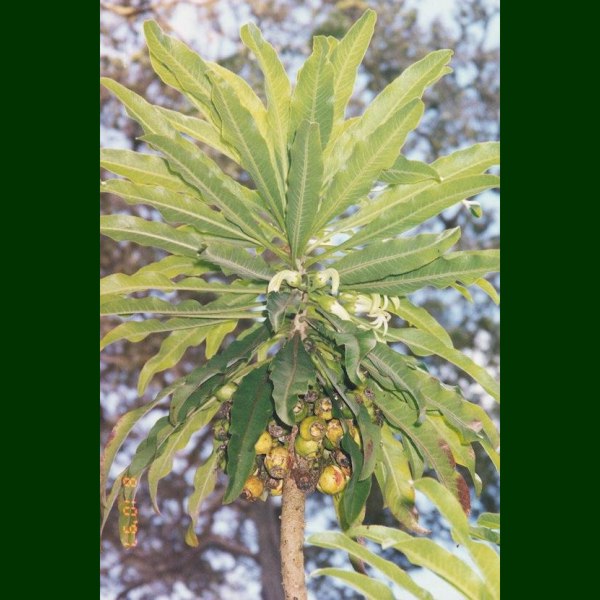 Hawaiian Name(s): ‘ōhā, ‘ōhā wai, hāhā, ‘ōhā wai nui (C. arborescens), hāhā‘aiakamanu (C. fauriei)
Hawaiian Name(s): ‘ōhā, ‘ōhā wai, hāhā, ‘ōhā wai nui (C. arborescens), hāhā‘aiakamanu (C. fauriei)Scientific Name: Clermontia (22 species)
Vernacular Name: none
Family: Campanulaceae
Status: endemic
Authority: C. arborescens (H.Mann) Hillebr., C. calophylla E.Wimm., C. clermontioides (Gaudich.) A.Heller, C. drepanomorpha Rock, C. fauriei H.Lev., C. grandiflora Gaudich., C. hawaiiensis (Hillebr.) Rock, C. kakeana Meyen, C. kohalae Rock, C. lindseyana Rock, C. micrantha (Hillebr.) Rock, C. montis-loa Rock, C. multiflora Hillebr., C. oblongifolia Gaudich., C. pallida Hillebr., C. parviflora Gaudich. ex A.Gray, C. peleana Rock, C. persicifolia Gaudich., C. pyrularia Hillebr., C. samuelii C.N.Forbes, C. tuberculata C. Forbes, C. waimeae Rock
Description: Shrubs or small trees to 8 m tall.
Habitat Varied habitats, mostly wet forests, bogs and bog margins. Some species into mesic forests. Elevations from 305–1975 m, some species restricted to portions of islands and small elevational ranges, especially on Hawai‘i (Wagner et al. 1990:437–488).
Medicines: For the treatment of cuts the sap is blended with the sap of ‘ulu (breadfruit, Artocarpus altilis) and powdered ‘ahakea (Bobea spp.). The application is followed by a wash with liquid from ‘aiea (Nothocestrum spp.) or possibly ‘auko‘i (Senna occidentalis). For hano (asthma) and forms of nae (shortness of breath), the mature fruit are mixed with green kukui fruit (Aleurites moluccana), ‘ōolena root (Curcuma longa), leaves and leaf buds of pawale (Rumex spp.), ‘ōhi‘a ‘ai bark (Syzygium malaccense), ‘ala‘alawainui pehu stems (Peperomia spp.), noni fruits (Morinda citrifolia), and kō honua‘ula (red sugarcane, Saccharum officinarum). While on this medication patients consume fresh poi, ‘uala, lu‘au, fish, and kukui. To induce lactation, the sap is combined with with niu flesh (coconut, Cocos nucifera), ‘akoko leaves (Chamaesyce spp.), and kō kea (white sugarcane), and poured into an ‘ulua tuber, which is consumed (Chun 1994:221–222).
Non Medicinal Uses: Fruit eaten raw (Degener 1930:288).
Specific gravity of wood: unknown
Famous Locations:
Mele: "Holu ka maka o ka ‘ohawai a Uli" line in "Hole Waimea" (Elbert & Mahoe 1970:52–53)
`Ōlelo Noeau:
Dye Color and Parts:
Kino lau:
Location on Bishop Museum Kalihi Campus:
Propagation Information: Native Plants Hawaii.
Seed: Seed length approximately 0.7 mm. Photograph: B.Kennedy. Species: C. kakaeana.

